Fish Out of Water: My Experiences Joining the Crypto Community - Part 3: Ethereum Personas

Fish Out of Water Series
Part 1: New Beginnings
Part 2: The Community Shows Up
Part 3: Ethereum Personas
Part 4: The Standard for Crypto UX
Part 5: Product-Market Fit+
Hi everybody!
It’s been around a month since I last checked in and I have a very exciting development to share with you! If you remember my previous post, we were running a user study interviewing y’all in the Ethereum community to better understand how and why you use Ethereum. Well, we have concluded the study and have results to share with you! 🥳
Based on our findings, we identified and characterized personas of Ethereum users. These personas can be used by all Ethereum dapps to improve their UX. (Many of you may not know what personas are. This guide is a great primer that should properly explain their value and how they are used. Please read it, it’s short. From here on I’ll assume you have become familiarized with personas.)
Usually, personas are derived from exploratory interviews with 6-8 participants. Well, in this case you guys really showed up and demonstrated your passion to contribute to Ethereum and lift all boats. We interviewed 32 of you over two separate interviews, yielding a total of 53 hours of interviews! This is amazing and completely beyond anything I have seen in my professional career. Thank you! 🙌🏼
Our interviews delved into several topics around Ethereum: general participant background, Ethereum experience and attitudes, and perspectives on the Ethereum Community, investing, social networks, dapps, onboarding, and governance, among others.
With this data, I sat down and watched a recording of every session and took copious notes. In fact, you guys played so full out that I ended up with 132 pages of typed notes! 📑

This was me analyzing the notes to identify patterns and develop personas.
The end result is 6 different personas that roughly represent the different groups in the Ethereum community today. Please remember that personas are representative of trends and attitudes in a population, and that even if you identify with a persona, the specific details may be different between you and the persona in question.
Also, many of you may exhibit the traits of multiple personas, and that’s fine: people can be different personas at different times or in different contexts. Again, the idea is to abstract and humanize patterns to develop empathy and improve the UX process.
Finally, some of you may be saying “What about X persona or Y persona that I’ve observed?”. While the most probable explanation is that those personas in question are actually not meaningfully represented in the Ethereum community, there are other possibilities. It may be that other personas are just not present in our data by chance or that there are inherent biases in our data collection that influenced the results. Ultimately, any conclusions drawn from sample data for a population have a confidence level that is less than 100%. In our case, because the data is extremely ample and diverse, we have a high level of confidence in our findings.
All that being said, let’s move on to the presentation of each persona. You’ll see for each persona several sections describing who the persona is, their goals and frustrations, their characteristics, what dapps they use, and the social networks they frequent. The logos in the dapps area represent the dapps participants matching those personas reported using. The logos in the social networks area represent social networks that were mentioned by a plurality of users in the study. When they are colored-in, participants for a given persona reported using them; when they are grayed-out, participants for this persona did not use them. (Note that stock photography is used under a free-use license from Unsplash and that all logos are trademarks of their respective owners.)
So, without further ado, our Ethereum personas are:
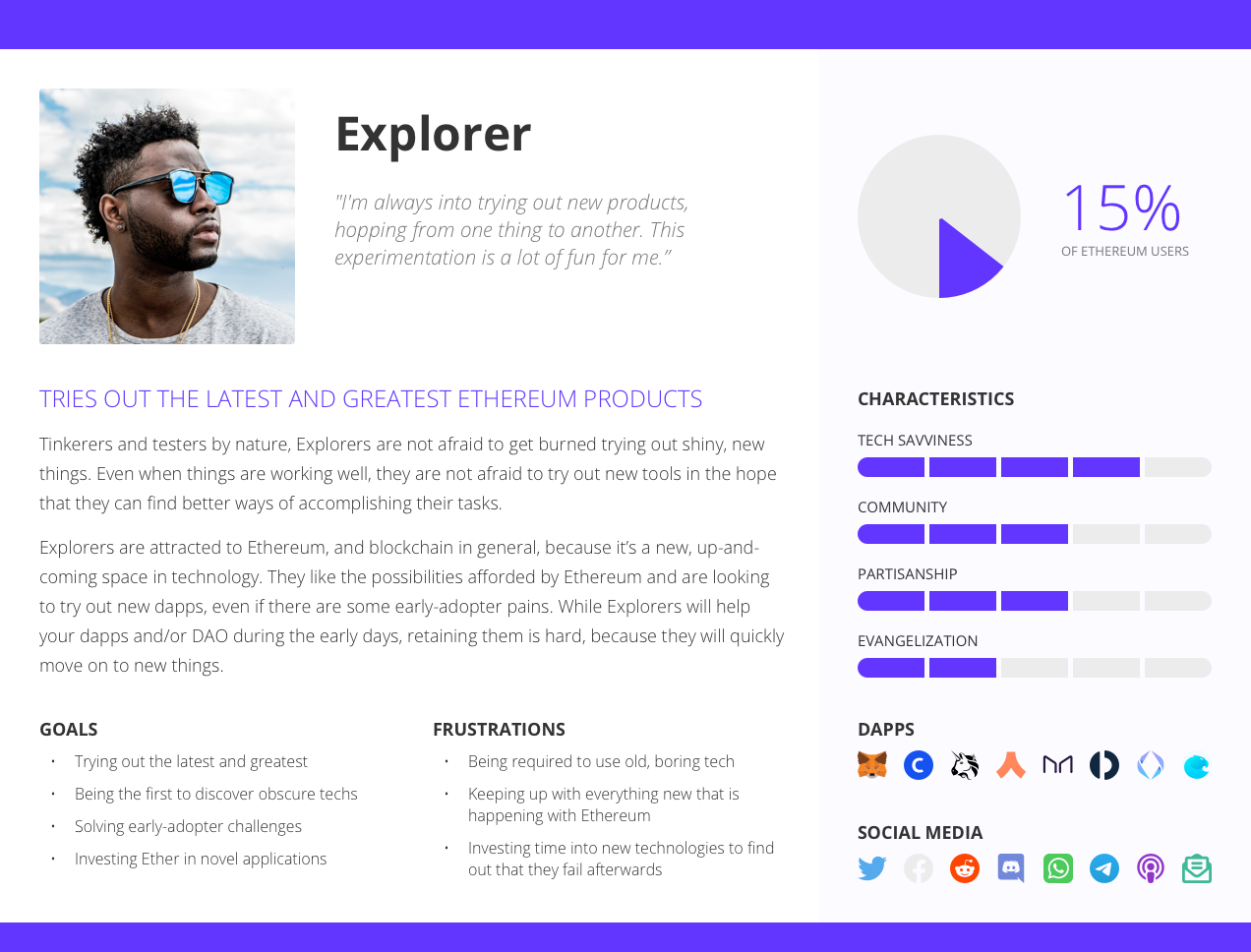
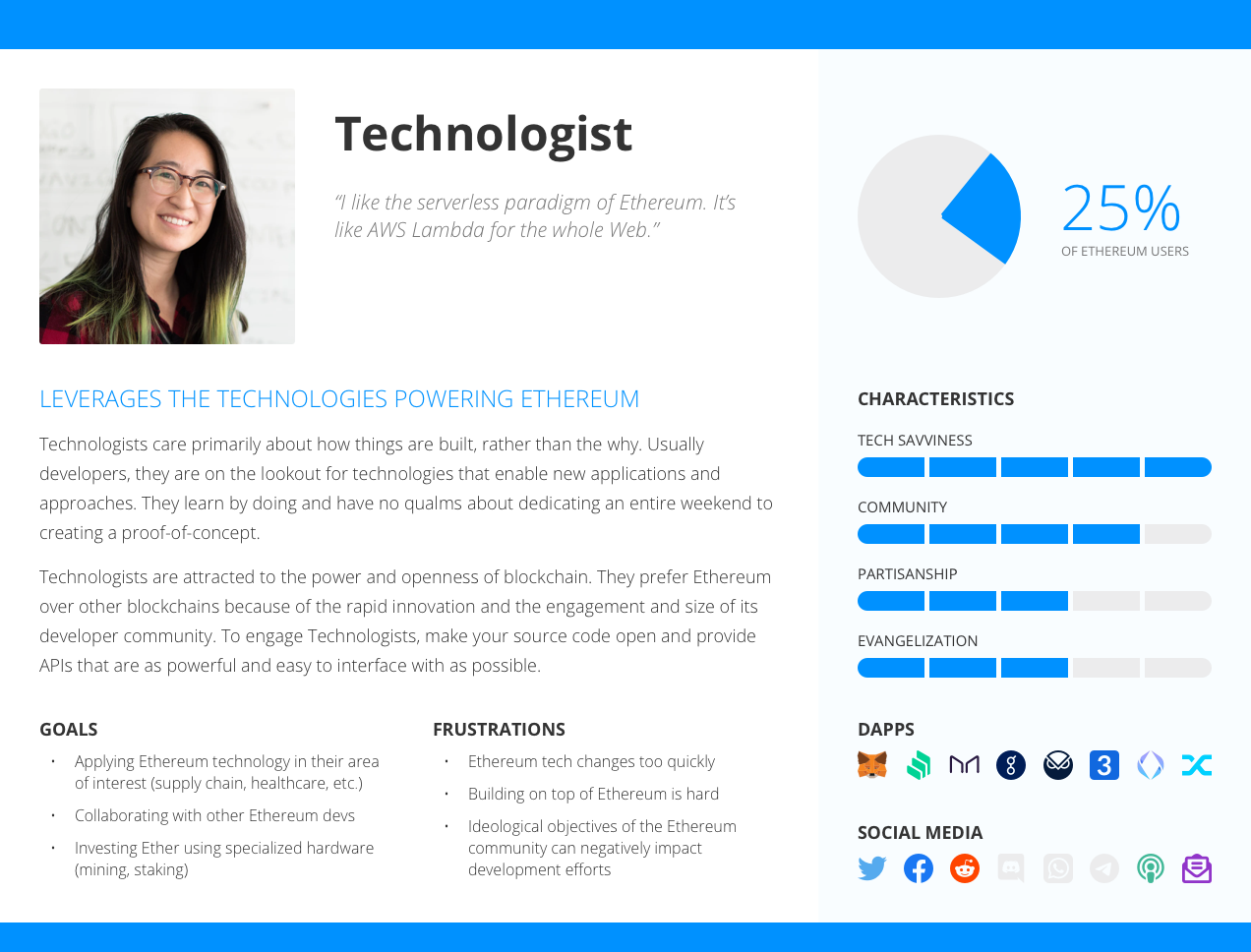

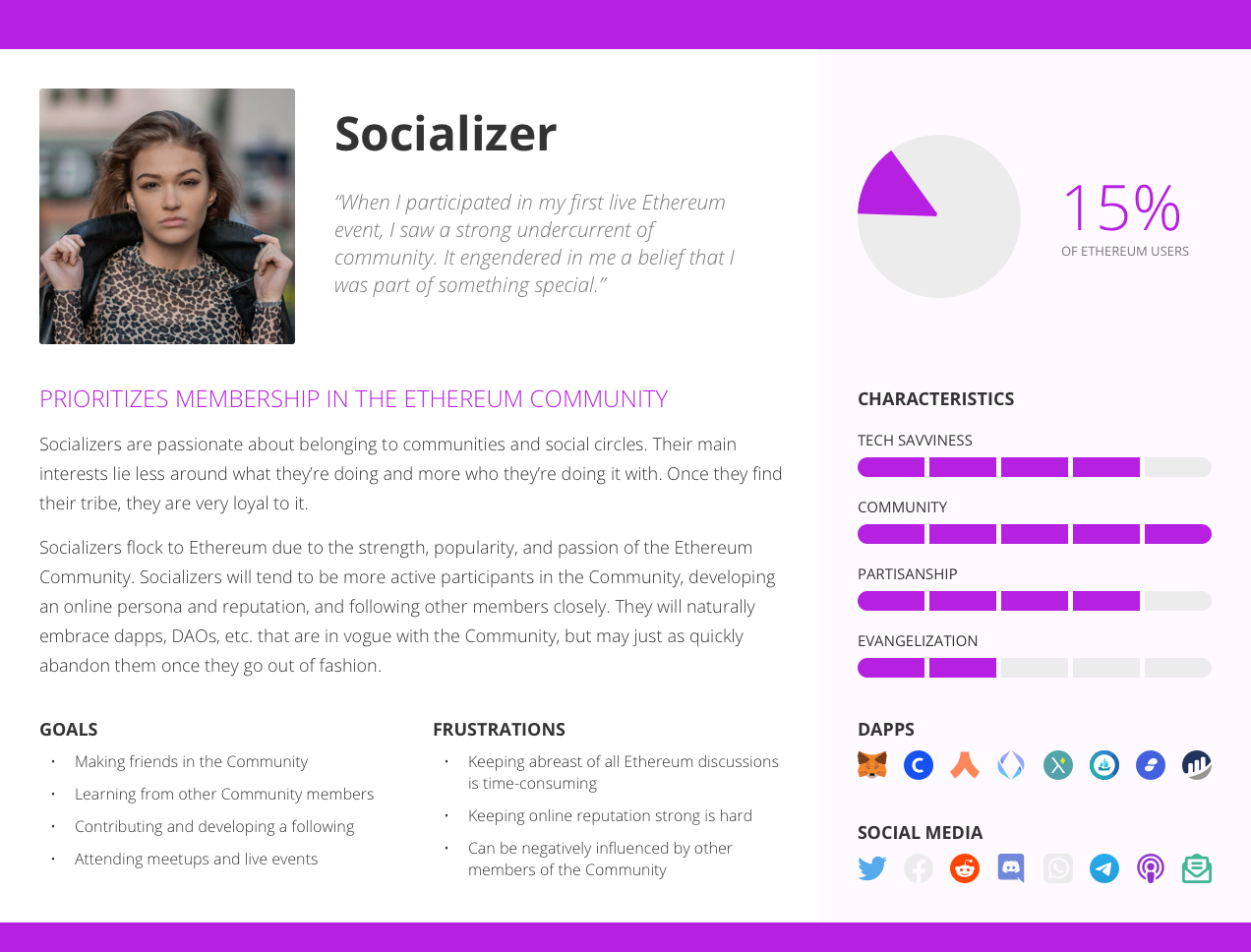
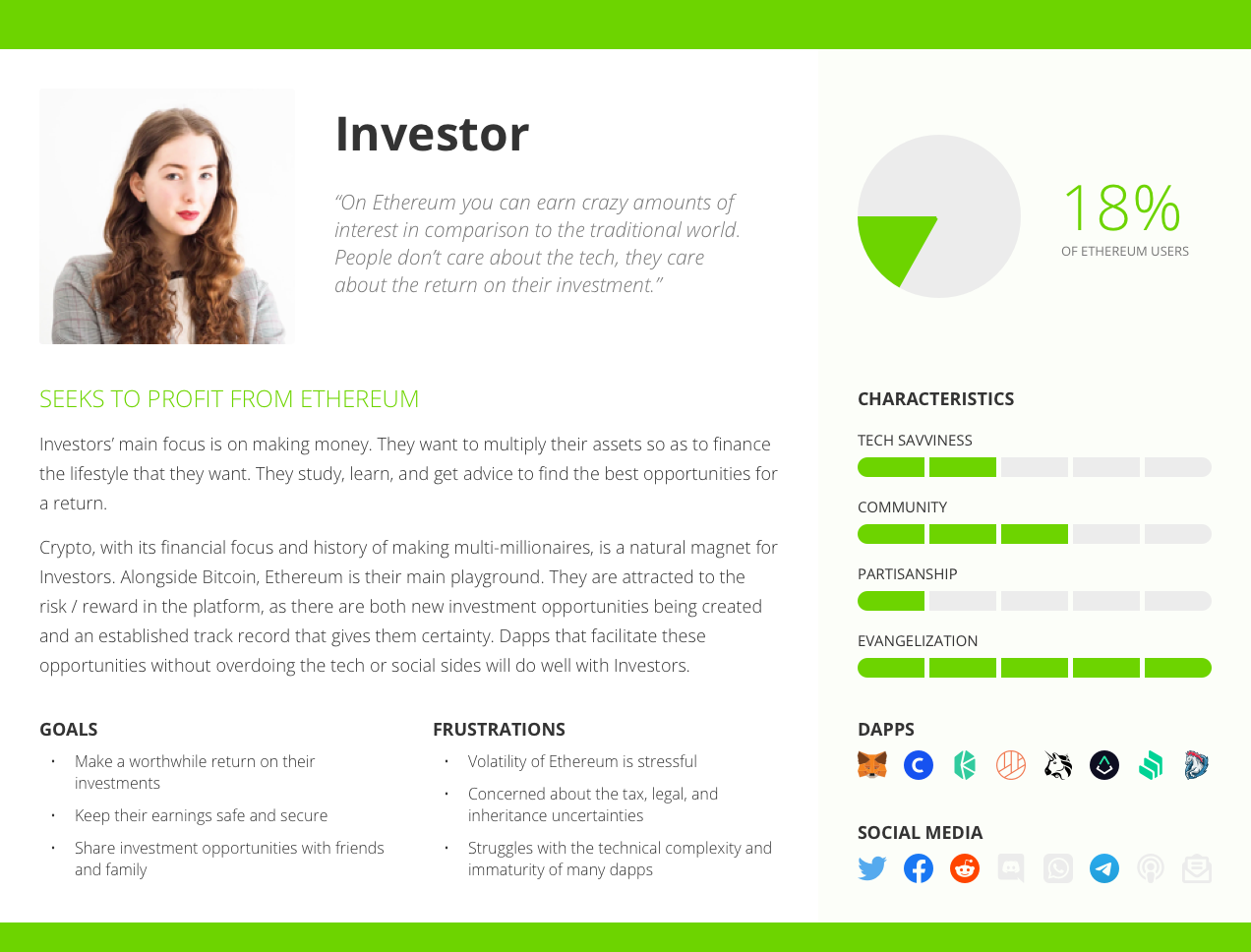
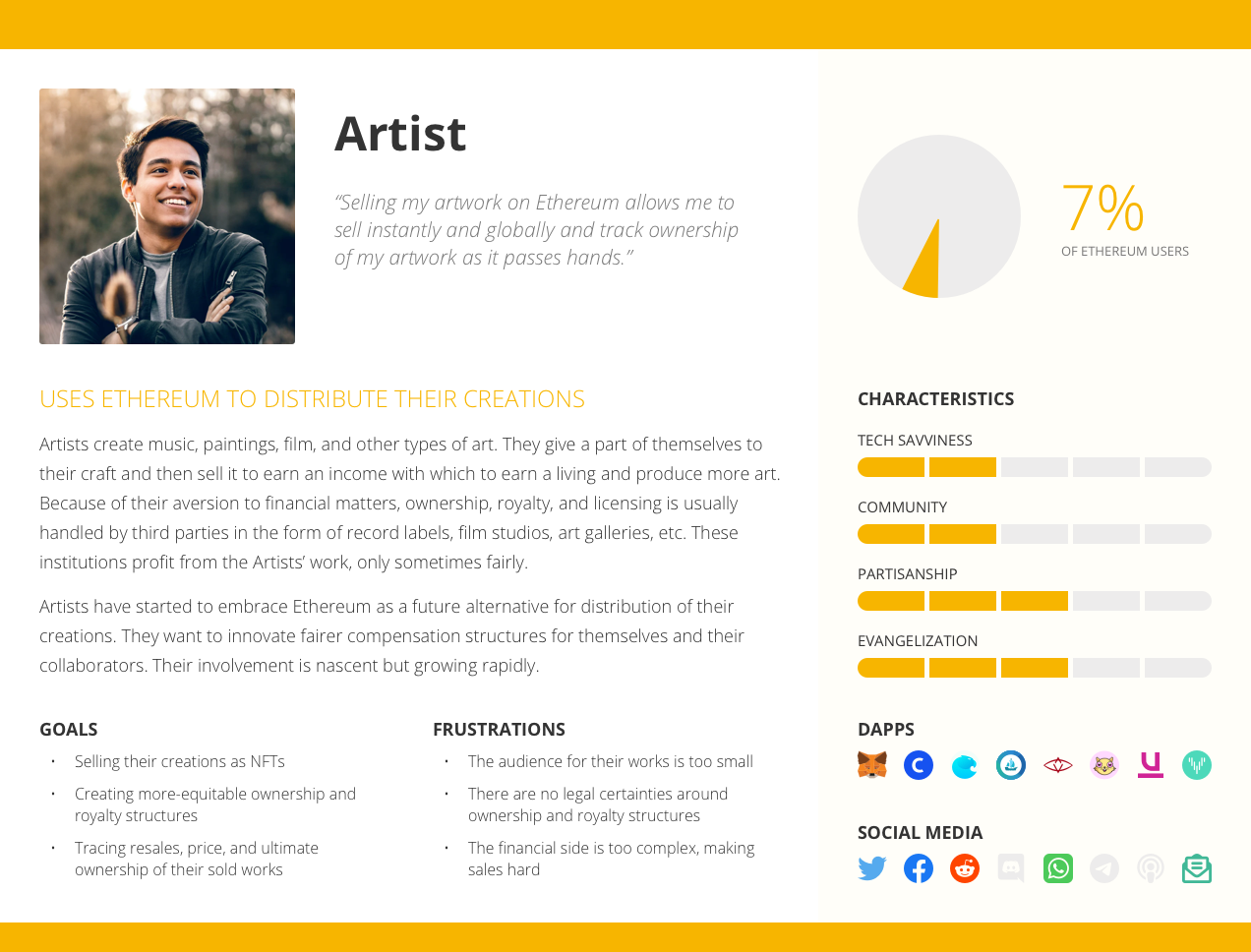
So, how can you leverage these personas for your project? Well, with this knowledge you can ensure you target your business to meet the needs of one or more personas, and to tailor the UX to better fit their workflows. The end result should be projects with better product-market fit and higher usability.
I hope these personas prove valuable to you. If you have any questions, thoughts, or feedback about these personas please do let me know in our Discord channel. If you use them in your projects, I’d especially love to hear about that!
If enough of you express interest, I’d be more than happy to host a webinar / Q&A where I can talk more about them in detail.
I’d just like to close by thanking all the people who contributed to this study. You are amazing and your enthusiasm and time are much appreciated. ❤️
Thank you all!
Gabriel
Continue to Part 4: The Standard for Crypto UX
Header image from Duy Pham, available on unsplash.com
